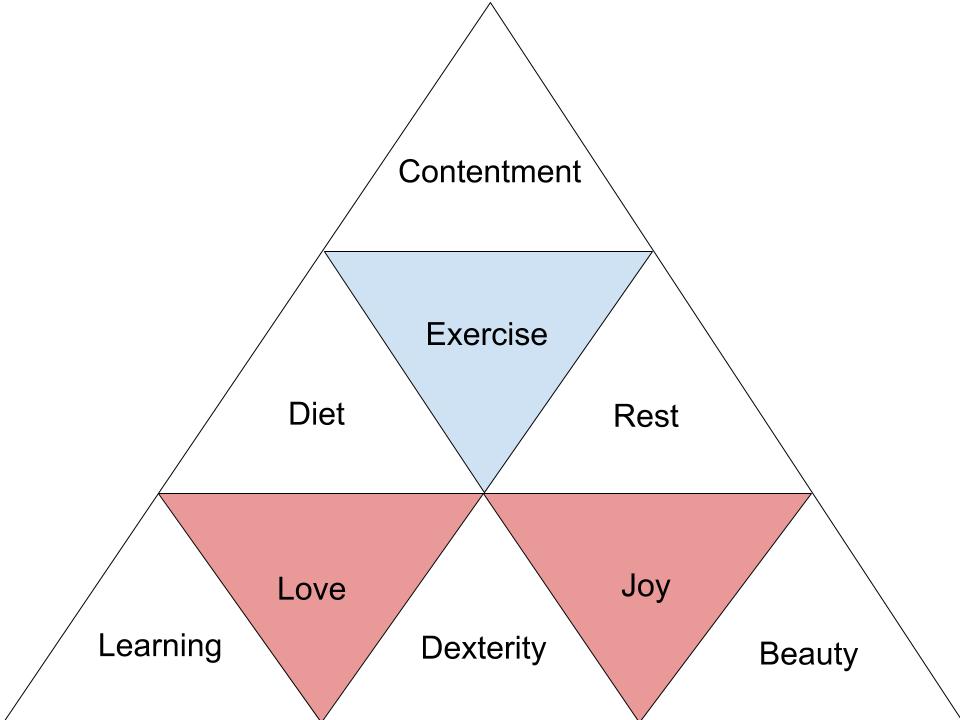June is Alzheimer’s Awareness month, a good time to revisit wellness strategies for maintaining brain health. Each day for a few years I glance through twenty or so articles on Alzheimer’s and/or brain health. I skip the popular ones intended to get consumers or investors to part with their money. I focus instead on articles that reveal how the brain works and what makes the brain work well. I draw from that research plus my own experiences with dementia to form a wellness pyramid of strategies that I will share over the course of this month.
Early on I deduced that oxidative stress, not amyloid plaques, must be the more direct cause of the most common types of dementia symptoms, a position that a growing body of research has supported in recent years. That is why I find infuriating all the headlines claiming that a supplement or food type will prevent Alzheimer’s, or that a new drug shows promise for curing Alzheimer’s. Many different things cause oxidative stress, there is no one single food source or even lifestyle choice that remedies all the possible causes.
Amyloid plaques occur in the majority of dementia; a cure might be found for these plaques (despite decades of failure targeting this one culprit) but that still would be to no avail if other aspects of your diet or life is building up oxidative stress as well. My wellness pyramid will cover the most important quality of life factors affecting brain health that has been brought to my attention over the years. I will start with the pyramid’s pinnacle, corresponding to the most threatened factor in our society, then work my way down the pyramid for the subsequent levels of brain health maintenance and enhancement. I will conclude the series with a suggested lifestyle of activities.
Recent data reveals that the numbers of those with dementia have increased by 55% over fifteen years, mostly due to the burgeoning Baby Boomers coming of age. More relevant to my purpose, the same research indicates that those with Alzheimer’s dying in their homes has risen from 13.8% to 25%. One out of four Alzheimer’s patients have at least one caregiver living with them up until the end.
The main purpose of my wellness pyramid is to maintain wellness for caregivers and, by extension, enhance the quality of life for both caregivers and patients. Even if you are not a caregiver, this pyramid provides valuable guidance for maintaining your brain health. Stay tuned throughout Alzheimer’s Awareness month for better brain health.


I certainly believe contentment should be your goal for optimized health. Get the most from the journey to find contentment and you will probably learn that the journey is the contentment. You are right about the supplements not being the answer. More research is currently being done on what to remove from the diet to prevent people from living in a steady state of inflammation. Eventually inflammation can overwhelm a person and symptoms begin to appear. A caregiver may be even more vulnerable do to the added demands put on them.
Thanks for adding that information, Marc.